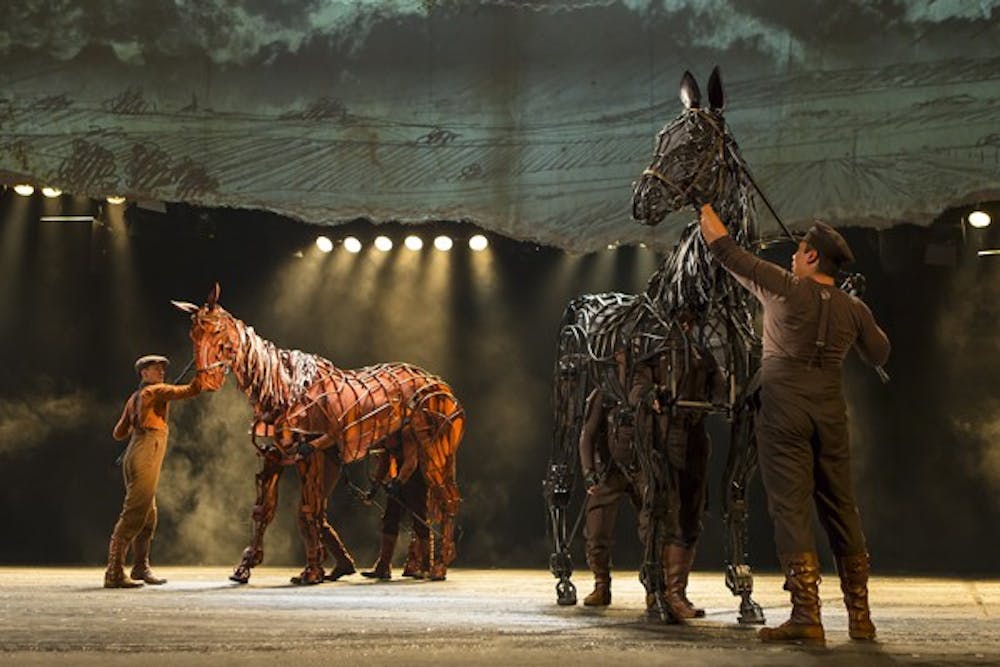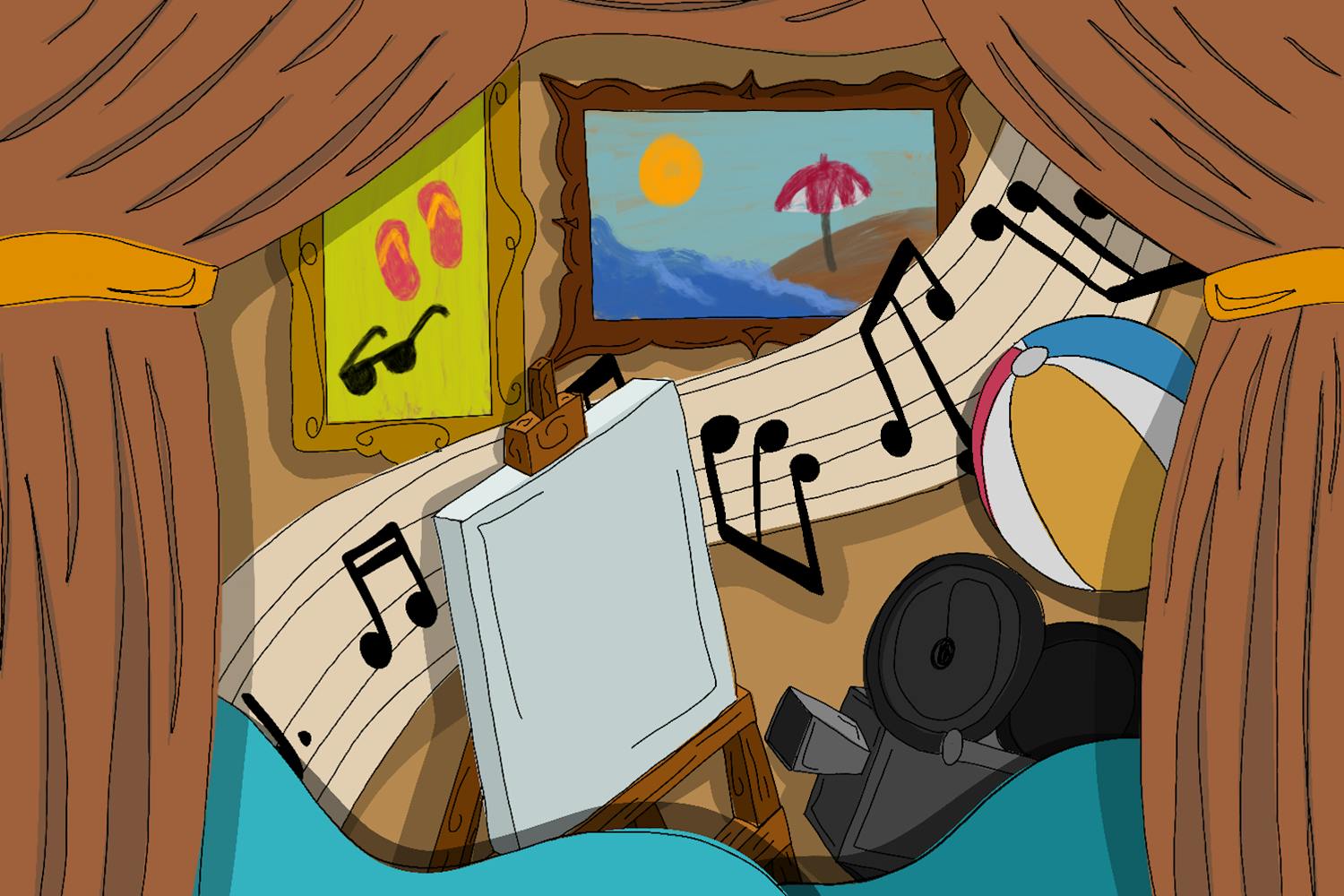 (Photo courtesy of Brinkhoff/Mögenburg ©)
(Photo courtesy of Brinkhoff/Mögenburg ©)“War Horse” made "puppet-love" a real phrase during its opening performance Tuesday night at ASU Gammage. The Tony award-winning play, based on the novel by Michael Morpurgo, is set in early 20th century England, when war was imminent and families were penny-pinching.
Enter Joey, a hunting foal with a temper, opposite features for a horse expected to save a farm by plowing crops. He is auctioned off for a record-high amount of 39 guineas to a poor family. The bond between the family’s son, Albert Narracott, and Joey evolves into a loyal and heartbreaking lifelong friendship after Joey is sold to the military to fight in the war.
The play jumps around to different parts of the battle revealing the strenuous and grueling journey of a war horse. Before Joey is sent to war, he meets Topthorn, (played by Jon Hoche, Danny Beiruti and Aaron Haskell) a strong black-haired stallion. The two horses depend on each other for endurance and company before the cruelty of war tears them apart. Joey and Topthorn symbolize the indispensable companionship soldiers relied on during the war.
Albert (played by Andrew Veenstra) struggles to adjust to life without Joey; therefore, he volunteers to go to war in search of his beloved horse. Joey gives Albert a purpose for fighting in the war — the same purpose that a wife gives her husband for returning home safely.
Animals in movies and other theatrical productions have proven their natural ability to melt the viewers’ hearts. “War Horse” uses puppets to portray the horses to which audiences inevitably grow attached. Joey, played by Jon Riddleberger, Patrick Osteen and Jessica Krueger, reacts and behaves almost identically to the actions of a real horse. The littlest ear flicks, trots and swish of the tail transforms an ordinary puppet horse to a real-life, loveable member of Albert’s family. The movements were gentle, yet concentrated, and as the show progressed, audiences look beyond the people handling the puppets to see the story through a horse’s eyes.
The humor of a man going to war to find his horse was acknowledged throughout the play and added bit of comic relief to the emotional story. The power of “War Horse” lied in its simplicity. The set was simple and included a strip of white above the stage to represent a shredded piece of paper documenting the time and place of each scene. There was no orchestra, but one man playing an instrument (Nathan Koci) while another sings along beside him (John Milosich).
As the war drags on, the soldiers and horses weaken, bringing on one of the final scenes where lone Joey is trapped in barbed wire and is too tired for escape. The scene mocks how soldiers can so easily get along if they work toward a common goal, despite the side they are fighting for. Joey’s role epitomizes the significance and necessity of animals in the war. He reminded the soldiers of their heart and conscience, something war desperately tries to take away.
“War Horse” is playing at the ASU Gammage until Sunday Feb. 10. Tickets can be purchased at asugammage.com.
Reach the reporter at mkthomp5@asu.edu or follow her on twitter at @MariaKThompson.




